Ball Behaviour
Steps Five & Six
Step Five
So how does a ball’s spin affect its flight? We’ve already discussed this in the Ball Flight chapter. It’s due to the Magnus Effect,(8) which I’d described thusly: “This spinning ball, when moving through the air will have an area of low pressure where the air is moving in the same direction as the spin of the ball, and an area of high pressure, where the air is moving against the spin of the ball. A ball hit with backspin only (no clockwise / anti-clockwise spin when viewed from above) will have its area of low pressure at the top of the ball, and high pressure at the bottom. This imbalance of air pressure around the ball will force the ball upwards, away from the high pressure, and towards the low pressure above it.” The more spin a ball has, the stronger the Magnus Effect. Going back to our 3 iron / wedge example, the wedge’s line of compression is lower on the ball compared to the 3 iron. This creates more backspin on the ball, which in turn creates a higher air pressure below the ball and a lower pressure above it, which causes the ball to fly higher with the wedge than compared to the 3 iron.
C

Step Six
What I didn’t explain fully in the Ball Flight chapter was the ball’s clockwise / anti-clockwise rotation when viewing the ball from above. This doesn’t really exist. Let’s look at what actually happens. So far we’ve looked at the ball’s behaviour when the line of compression is directly through the centre of the ball, and when it’s a parallel line directly below the centre of the ball.
Let’s now move the impact point not only below the centre, but also to the left of it. We’ll be left with a line of compression that looks something like the below diagrams. How will the ball behave in this case? Mr Kelley explains: “When the direction of the compressing force does not pass exactly through the centre of the ball, a spin will be imparted to the ball. It will rotate on the plane of a line drawn from the line of compression to a parallel centre line.”(9) In our example, a parallel centre line would be represented by the green line. We can then draw a line connecting these two parallel lines to create a plane. Its around this plane the ball will now spin. When the impact point is directly below the centre line, and the line of compression is pointing towards the target, this plane is vertical. We know this produces only backspin. Now this plane is tilted towards the right, meaning the area of low pressure has moved from directly above the ball, to position above the ball and somewhat to the right. Conversely, the area of high pressure has moved from directly below the ball, to below it and to the left. Thanks to the Magnus Effect, the ball will curve towards the right during its flight. The further we move the line of compression left or right away from the centre of the ball, the more we increase the tilt of this plane. The increased tilt moves the areas of high and low pressure further left and right of the ball increasing the amount of hook and slice we place on the ball.
Let’s now move the impact point not only below the centre, but also to the left of it. We’ll be left with a line of compression that looks something like the below diagrams. How will the ball behave in this case? Mr Kelley explains: “When the direction of the compressing force does not pass exactly through the centre of the ball, a spin will be imparted to the ball. It will rotate on the plane of a line drawn from the line of compression to a parallel centre line.”(9) In our example, a parallel centre line would be represented by the green line. We can then draw a line connecting these two parallel lines to create a plane. Its around this plane the ball will now spin. When the impact point is directly below the centre line, and the line of compression is pointing towards the target, this plane is vertical. We know this produces only backspin. Now this plane is tilted towards the right, meaning the area of low pressure has moved from directly above the ball, to position above the ball and somewhat to the right. Conversely, the area of high pressure has moved from directly below the ball, to below it and to the left. Thanks to the Magnus Effect, the ball will curve towards the right during its flight. The further we move the line of compression left or right away from the centre of the ball, the more we increase the tilt of this plane. The increased tilt moves the areas of high and low pressure further left and right of the ball increasing the amount of hook and slice we place on the ball.
A
B
C
A
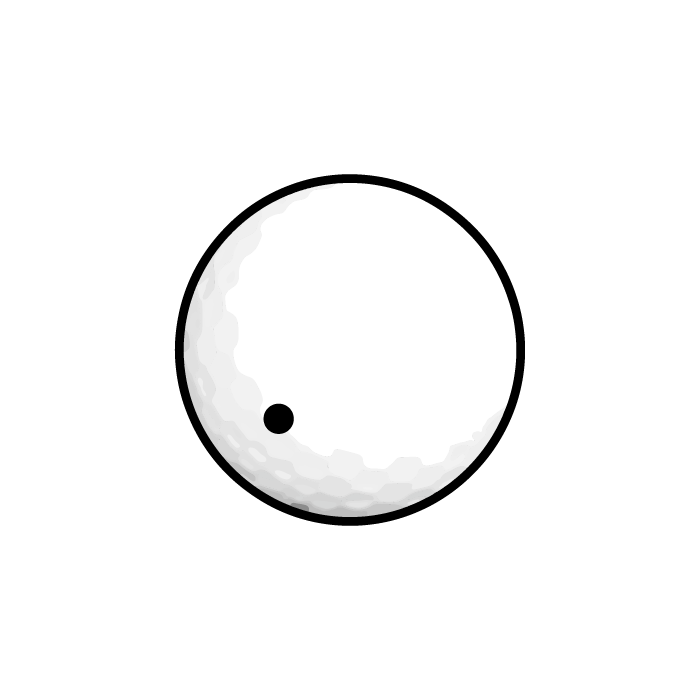

B
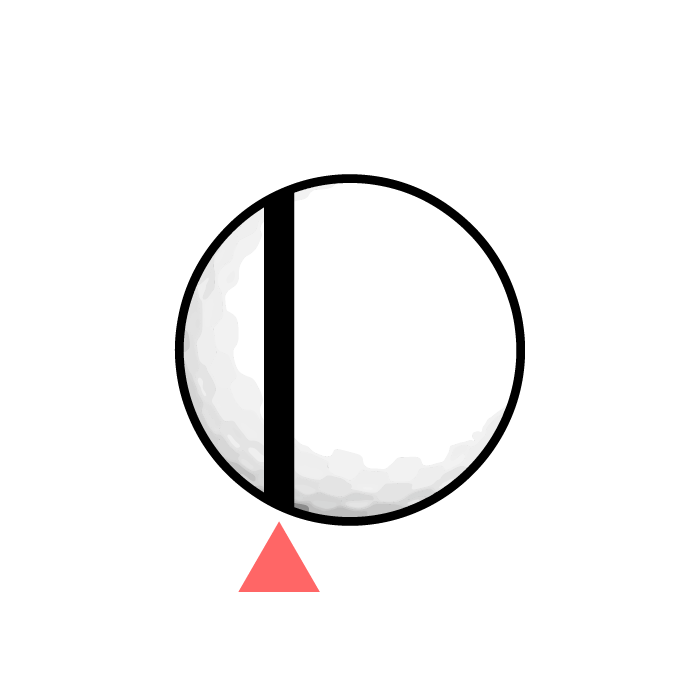

C
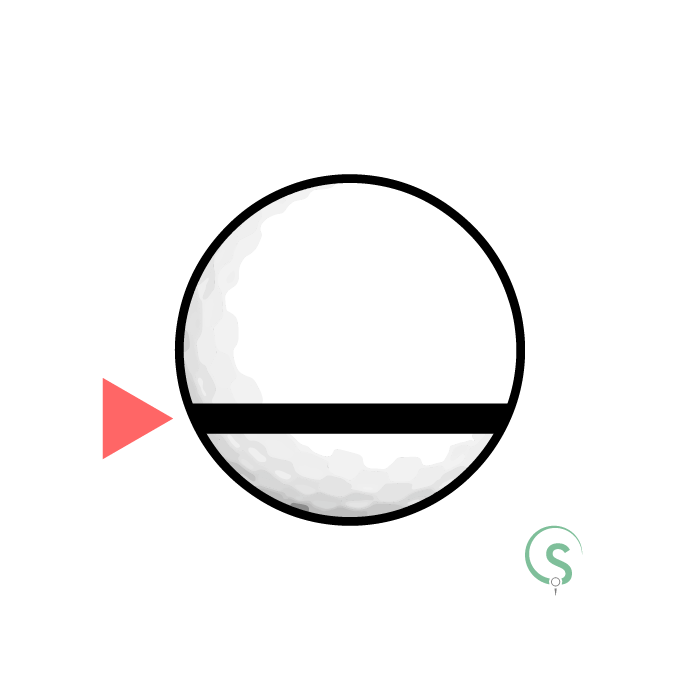

Line of compression below the equator and left of centre.
A
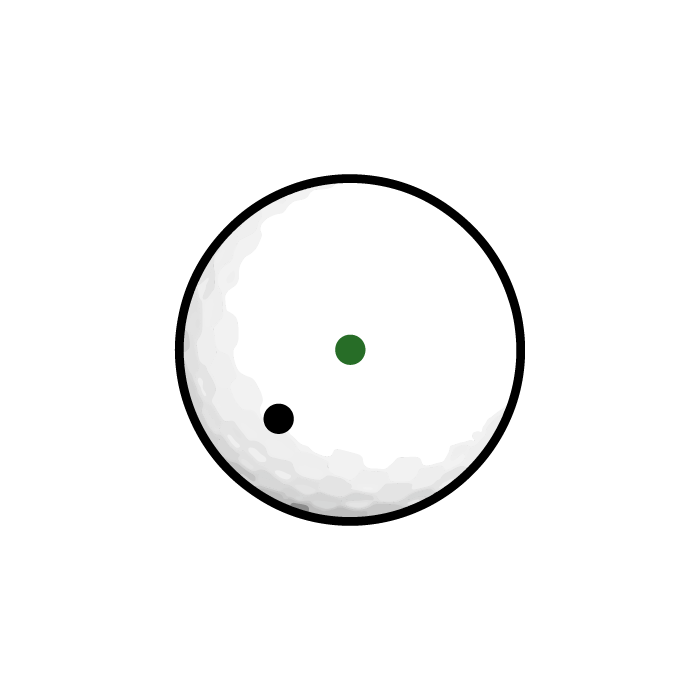

B
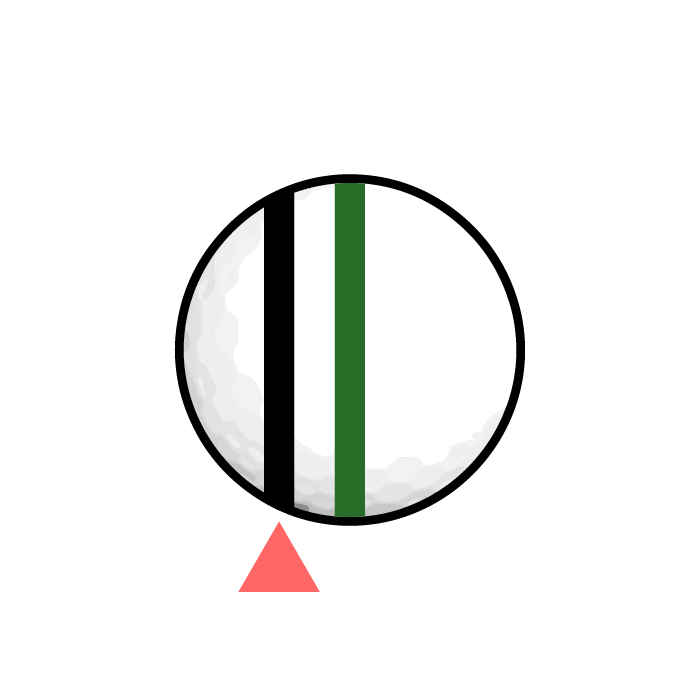

C
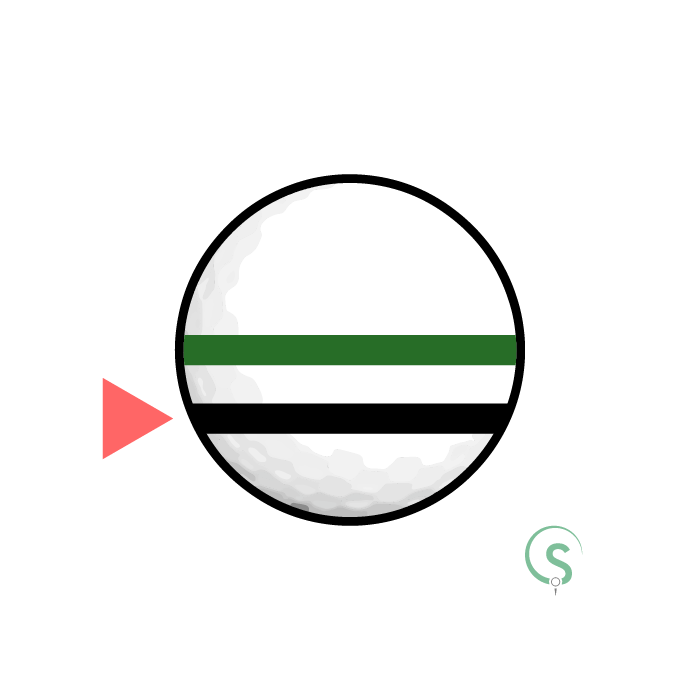

Centre line drawn parallel to the line of compression.
A
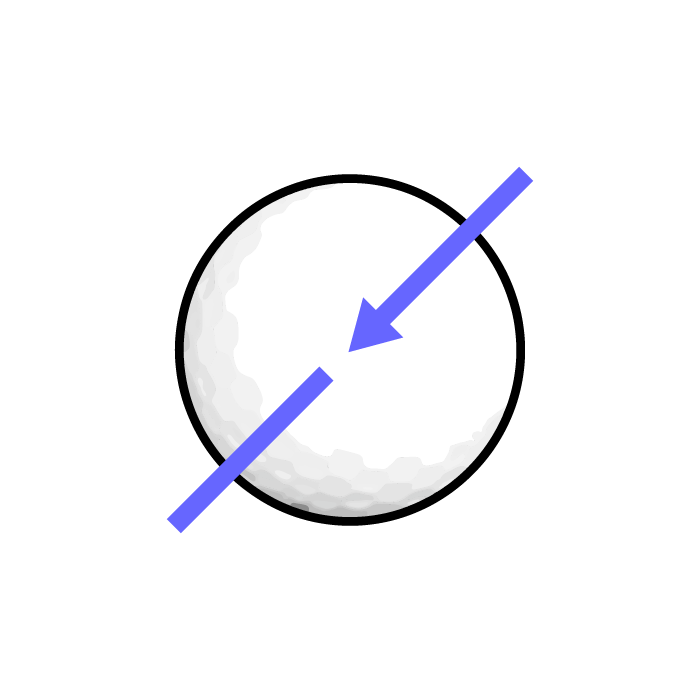

B
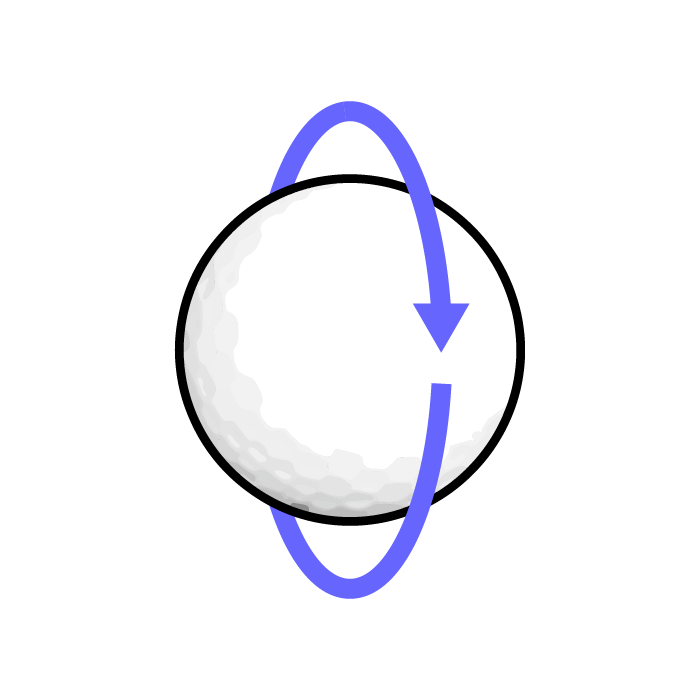

C
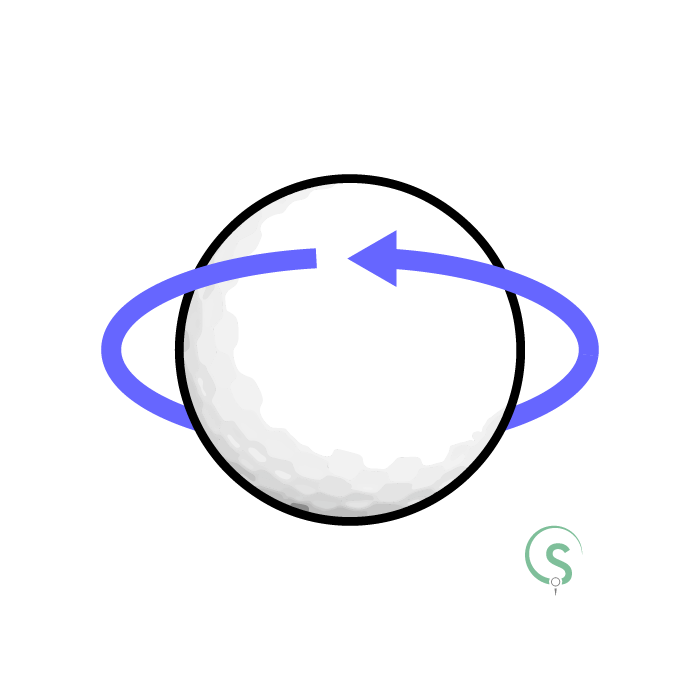

Resultant orientation of ball spin.
